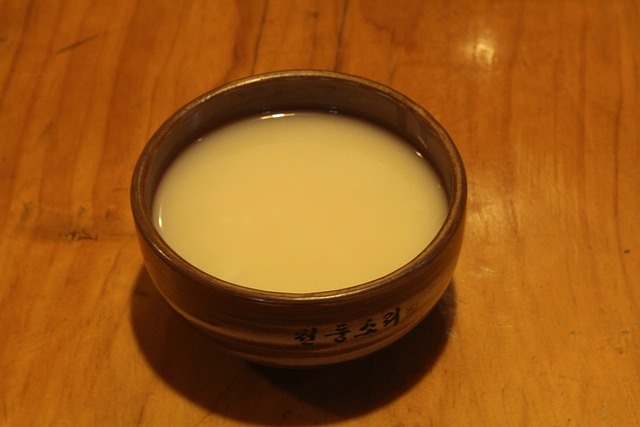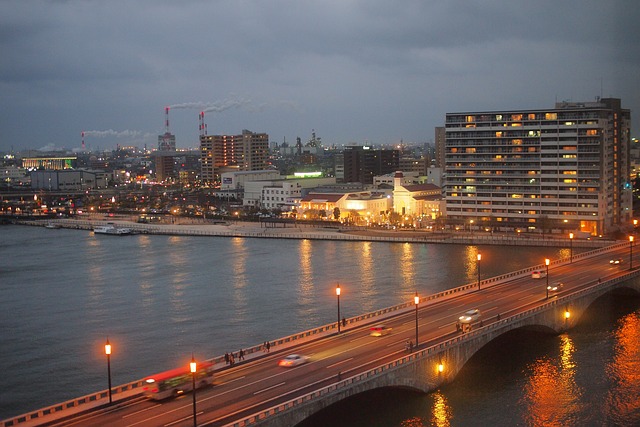Tanaka runs Kiminoi Shuzo, a revered brewery in the small town of Arai in Niigata Prefecture’s southern reaches. Arai lies at the bottom of a glacial valley, surrounded by rice paddies and, beyond those, mountains. During an average winter, these mountains receive over 20 meters of snow, which melts into the town’s paddies in spring. This snowmelt is crystal clear and nutrient-rich — ideal for making the delicate sake Niigata breweries are known for.
For centuries, the entirety of Niigata Prefecture has been famous across Japan for one thing above all else: high-quality sake. The region’s weatherbeaten plains and valleys host 89 registered breweries, many of them old enough to have had samurai swagger through their halls.
Today, however, nationwide Japanese sake production is on a decades-long downward trend. While the drink still enjoys stubborn popularity among older generations, new challenges are forcing Niigata’s brewers to adapt their ancient craft to changing times — a balancing act that is often easier said than done.
At Kiminoi Shuzo, Tanaka brews sake via the yamahai method, a complex and old-fashioned procedure. While most commercial breweries create their products with the sokujō approach that includes adding artificial yeast to the pre-brewed mash, yamahai is akin to the similarly labor-intensive kimoto technique of natural lactic acid production, sans only the yama-oroshi (grinding and mixing of the intermediary yeast starter) step.
Consistency among brews can be hard to achieve with non-sokujo methods, but for those like Tanaka who can, the individuality and natural expressions of each bottle are worth it.
“You can’t make much sake with the yamahai method, and it’s expensive,” Tanaka says, adding that the technique is important to his brewery because it eschews mass production in favor of the kind of quality, traditional brewing that Niigata is known for.
Tanaka’s management philosophy is a concept more commonly found in the world of haiku: fueki ryūkō — the balance between keeping up with the times and yet, at your core, remaining authentic. He believes a commitment to this philosophy will help Niigata’s sake breweries evolve their offering without losing their roots.
“(Sake’s) taste is very different now compared to 100 years ago,” says Tanaka. “For example, nowadays, young people prefer sparkling sake or things like that. We (brewers) need to adjust to who is living now while still staying true to our methods and quality.”
‘Soul drink’ and ‘severe circumstances’
For decades, Niigata’s declining population, changes in drinking habits among young people and increased competition from other drinks like beer, shōchū (Japan’s indigenous distilled spirit) and ready-to-drink mixers have placed pressure on the industry. That sake drinking and brewing might one day vanish wholesale from Niigata, however, is unthinkable for many residents.
“In Niigata, nihonshu is a kind of soul drink, a soul alcohol — like wine to Western countries,” says Koichi Sakai, executive director of the Niigata Sake Brewers Association.
“The prefectures that produce the most Japanese sake are places like Hyogo and Kyoto, but Niigata has the highest number of breweries,” adds Yosuke Tanaka, president of Lagoon Brewery, a sake producer on the outskirts of Niigata City.
“In most towns, there are breweries,” Tanaka continues. “Even as children, people grow up and there are sake breweries nearby. As an adult, they are able to go in and enjoy sake as something that’s very close to them.”
Many, including Sakai, believed salvation for Niigata sake’s future lay to the southwest. Through 2010, China accounted for 10% of Niigata Prefecture’s total sake exports.
“China was by far the biggest sake export market in which we were trying to sell Niigata sake,” he says with a sigh.
In 2011, fearing radioactive contamination following the Fukushima No. 1 nuclear disaster, China prohibited food and alcohol imports from Fukushima and nine neighboring prefectures, including Niigata. While the embargo on Niigata rice was lifted in 2018, Niigata Japanese sake is still banned despite scientific data confirming its safety.
“It is truly incomprehensible that the prohibition policy continues to this day,” Sakai says. “Now, production is 40% of what it was … We (sake brewers) are in very severe circumstances.”
Adapting sake
Nonetheless, like a sumo wrestler who just indulged in some of Niigata’s finest, the region’s brewers are hard to keep down.
Sake-infused cleansing masks are one such adaptation. Tadayoshi Watanabe, the president of Joetsu City-based brewery Joetsu Shuzo, hopes this new line of beauty products will increase sake’s appeal to younger crowds. Sake has been an intriguing if gimmicky ingredient among skincare companies since the luxury Japanese brand SK-11 began making creams from the yeast used during the sake brewing process. Today, skincare companies and health bloggers alike claim sake contains antioxidants that leave skin looking clearer and more youthful.
“People with old-fashioned tastes are getting fewer and fewer,” Watanabe says. “We need new people to come in and keep this industry afloat.”
Yosuke Tanaka agrees, adding that the industry needs younger producers as well as consumers.
“Without people who are new and passionate about this industry, there won’t be new ideas and new innovation, and there definitely won’t be new investment,” he says.
Beyond marketing sake to young drinkers at home, Sakai still believes that the future of Niigata’s “soul alcohol” lies overseas. His dream is to one day sit down at any restaurant in Paris or Sydney and see sake on the wine list.
Sakai knows the quality, refinement and craftsmanship of Niigata Japanese sake is on par with the world’s best winemakers. To promote this belief, the Niigata Sake Brewers Association is sending representatives and an array of Niigata’s finest vintages for the first time to Paris’s annual autumn Salon du Sake, one of the largest sake industry conventions outside of Japan.
This is far from Sakai’s first attempt at international marketing. Last November, he oversaw a “sake and Western food pairing” evening in Niigata City, where 20 French and American guests were asked to assess the compatibility of five varieties of local sake with Western dishes.
“I think for non-Japanese, sake is not so familiar yet,” says Sakai. “ But I hope that one day, many people, ordinary people, can drink sake like wine.”
Brewers like Yosuke Tanaka agree that the international market is essential to his industry’s survival.
“Consider Japan’s declining population,” he says. “The number of people drinking sake will go down. It is necessary if Niigata wants to maintain the current number of breweries to have that sake export market.”
Sake is an exceptionally versatile drink. It can be served sparkling, plain, chilled and piping hot, and its flavors range from tart and salty to honey-sweet. This versatility, Sakai believes, has ingrained in Niigata’s brewers a knack for adaptation.
“I believe that there’s a future in Japan’s past,” says Watanabe, “(Niigata sake) is a part of us, so we’ll be OK.”
Back in Arai, the sleepy town shows no signs of any bubbling anxiety. Kiminoi Shuzo’s blackened entryway sits empty, except for Tanaka, its seventh-generation owner. Dimly lit by the glowing cabinets of the brewery’s award-winning bottles arranged inside, Tanaka stands atop cobblestones well worn by the footsteps of his ancestors.
“(About) 180 years ago, this area was only rice fields,” he says. “Back then, they had only one road, and the only business was rice. Now, there are still a lot of rice fields, and the rice is good. So we are still making sake.
“Some things don’t change.”
Kindly reproduced from https://www.japantimes.co.jp/life/2023/08/13/food-drink/struggling-niigata-sake-sees-a-future-in-japans-past/
 Previous Article
Previous Article Next Article
Next Article
- Categories:
- Share :
 Previous Article
Previous Article Next Article
Next Article
